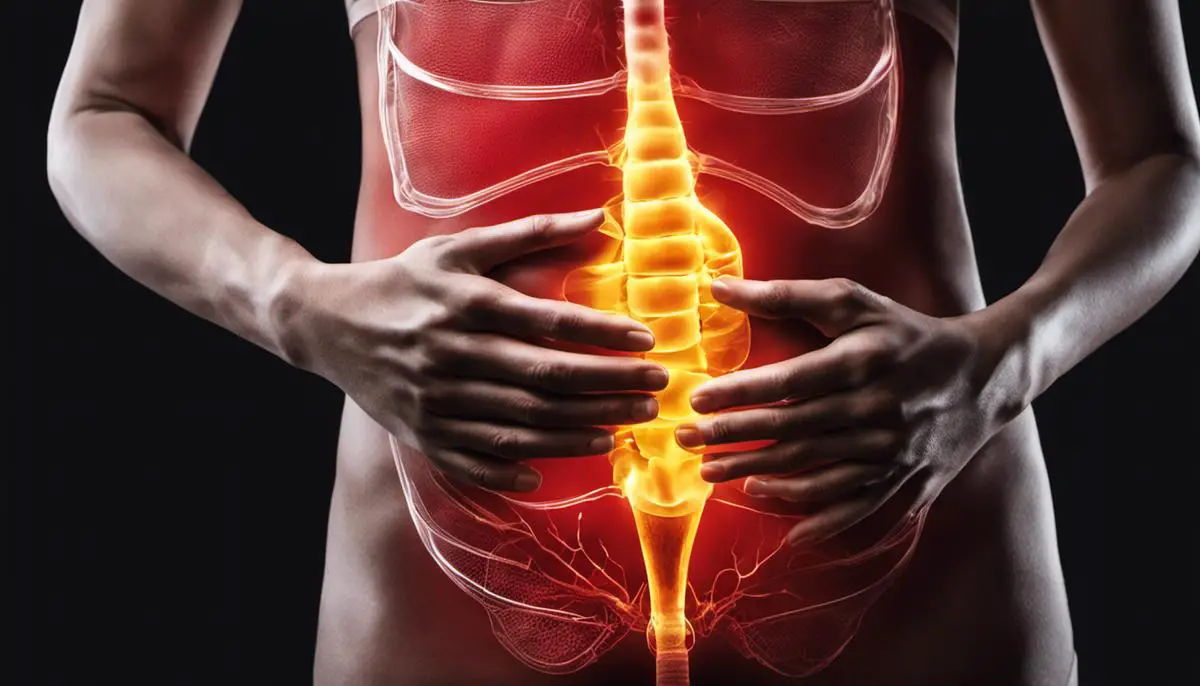Bladder Pain Syndrome, also known as interstitial cystitis, is a chronic condition causing discomfort, bladder pressure, pain, and sometimes pelvic pain. The distress caused by this condition can range from mild uneasiness to severe pain, affecting individuals’ overall health and quality of life. This exercise aims to offer an in-depth insight into various aspects of bladder pain syndrome, from understanding the condition, through its non-surgical treatments, criteria for considering surgery, to exploring the surgical options and life after surgery. While it’s critical, to begin with, non-surgical treatments, understanding surgical interventions becomes essential if the condition exacerbates and does not positively respond to non-surgical treatments.
Understanding Bladder Pain Syndrome
Understanding Bladder Pain Syndrome
Bladder pain syndrome, also known as interstitial cystitis (IC), is a chronic inflammatory condition of the bladder that causes varying degrees of pain, pressure, and discomfort, frequently in conjunction with a persistent need to urinate. This condition affects both men and women and can significantly impact quality of life. The exact cause of bladder pain syndrome is unknown, although it’s often associated with a defect in the bladder lining, an overactive immune response, allergies, and genetics.
There are several symptoms associated with this syndrome which can range from mild to severe. They may include chronic pelvic pain, a persistent, urgent need to urinate, frequent urination, often of small quantities, and pain during sexual intercourse. Symptoms can also fluctuate over time, periodically flaring in response to common triggers, such as menstruation, sitting for long periods, stress, exercise, and sexual activity.
Diagnosing bladder pain syndrome can be a multi-step process, especially due to the fact that its symptoms overlap significantly with other conditions like urinary tract infections (UTIs), bladder cancer, endometriosis in women, and prostatitis in men. A healthcare provider may perform a comprehensive medical history, a pelvic exam, urinalysis, tests measuring bladder pressure and capacity, a cystoscopy, which allows them to see inside the bladder, and/or a biopsy to analyze tissue samples from the bladder and urethra.
Understanding Surgical Interventions for Bladder Pain Syndrome
Bladder Pain Syndrome, otherwise known as Interstitial Cystitis, is a medical condition characterized by persistent pain in the bladder. Some individuals suffering from this condition are able to manage their symptoms through lifestyle modifications, physical therapy, and medications. However, if these strategies prove ineffective, various surgical procedures might offer relief.
- Transurethral Resection: During this procedure, a special instrument called a cystoscope is used to remove ulcers or inflamed tissues from within the bladder. Although it has the potential to provide pain relief, this procedure might lead to a worsening of symptoms for some individuals.
- Neurostimulation: Also referred to as sacral nerve stimulation, this therapy involves the surgical implantation of a device that emits mild electrical impulses to affect the nerves controlling bladder activities. Some patients find that this alleviates symptoms of bladder pain and frequent urination.
- Botox Injections: Injecting botulinum toxin type A, or Botox, directly into the bladder muscles can help reduce pain and decrease urinary frequency.
- Bladder Distension: Less common today, this method involves filling the bladder with a liquid or gas to help stretch it, often providing temporary relief.
- Cyclosporine: This powerful immunosuppressant is typically used to prevent organ transplant rejection, but certain studies suggest it could benefit those with severe bladder pain syndrome resistant to other treatments.
- Bladder Augmentation: In advanced cases, it may be necessary to enlarge the bladder by grafting a segment of the intestine to it. This significant procedure carries potential complications and might require the patient to use a catheter to empty their bladder several times a day.
- Bladder Removal: As a final resort, surgeons might recommend removing the bladder in a procedure called a cystectomy. This is typically considered only when all other treatment options have been exhausted and the patient’s pain is incapacitating.
While surgical procedures can provide relief, they do not guarantee a cure for bladder pain syndrome. It’s crucial to weigh potential benefits against risks and consult a healthcare provider thoroughly before making a decision.
Beyond physical symptoms, bladder pain syndrome can also take a toll on emotional health. In such cases, seeking assistance from a counselor or support group can prove beneficial in dealing with this condition, offering coping mechanisms to manage symptoms and improve quality of life.

Non-surgical Treatments for Bladder Pain Syndrome
The Value of Non-Surgical Treatments for Bladder Pain Syndrome
Intermittent Cystitis, or Bladder Pain Syndrome (BPS), is a chronic health complication signified by recurring pain in the bladder or the adjoining pelvic area. For some patients, non-surgical interventions prove effective in symptom management and lead to improvements in their daily life quality.
Medications
Medications are commonly the first line of treatment for bladder pain syndrome. These may include over-the-counter pain relievers, antihistamines, and pentosan polysulfate sodium (Elmiron), a medication specifically approved for treating bladder pain syndrome. Additionally, tricyclic antidepressants, such as amitriptyline, may be prescribed to help relieve pain and urinary frequency.
Bladder Instillations
Bladder instillations, also known as bladder wash or bath, involve directly inserting medications into the bladder through a catheter. These medications may include dimethyl sulfoxide (DMSO), an anti-inflammatory, heparin, a bladder coating substance, or a cocktail of various medications. This treatment is typically performed weekly for a period of six to eight weeks to alleviate symptoms of BPS.
Nerve Stimulation
Another non-surgical treatment option is nerve stimulation, which utilizes mild electrical pulses to stimulate the nerves to the bladder. Two types are primarily used: sacral nerve stimulation (SNS) and percutaneous tibial nerve stimulation (PTNS). Both types work to increase blood flow to the bladder, strengthening the muscles that help control urinary function.
SNS involves the surgical implantation of a small device that sends the necessary electrical pulses, while PTNS is a lower impact treatment that sends these pulses via a small needle inserted near the patient’s ankle. Although SNS involves minor surgery, both treatments overall are minimally invasive.
Physiotherapy
Physical therapy, more specifically pelvic floor physical therapy (PFPT), is also being used to treat bladder pain syndrome. PFPT works to relax and strengthen the muscles in the pelvic floor, reducing pain and discomfort. Sessions may incorporate exercises aimed at relaxation and stretching, biofeedback enhancement, and sometimes manual therapy.
Neuromodulation Therapy
Other methods include neuromodulation therapy such as posterior tibial nerve stimulation (PTNS) – a minimally invasive option which sends electrical impulses to a specific nerve in the ankle affecting bladder control, or transcutaneous electrical nerve stimulation (TENS) – a therapy that uses low-voltage electrical currents to relieve pain.
Lifestyle Changes
Finally, lifestyle changes like dietary adjustments, stress management, and regular gentle exercise can further help alleviate symptoms of bladder pain syndrome. These changes can be tailored specifically to each patient to avoid foods, activities, or situations that may trigger bladder pain or inflammation.
When dealing with bladder pain syndrome, many alternatives exist before leading to surgical interventions. Typically, these less invasive methods are pursued initially in efforts to manage the condition. However, in scenarios where these methods prove ineffective or are unsuitable, surgical procedures such as bladder augmentation, urinary diversion, or even complete bladder removal (cystectomy) might be the next course of action. These procedures strive to provide more comprehensive relief and promote an improved quality of life.

Photo by apothecary87 on Unsplash
Criteria for Considering Surgery
When Surgical Intervention may be considered for Bladder Pain Syndrome
Bladder Pain Syndrome (BPS), also known as Interstitial Cystitis, is characterized by chronic kidney pain, increased pressure in the bladder, and lower urinary tract symptoms persisting for more than six weeks without an identifiable cause. In such instances, surgery emerges as a potential treatment option where non-surgical remedies have demonstrated subpar results. A decision to pursue surgical intervention considers several factors to establish its viability as a viable treatment approach for BPS.
Severity of Symptoms
The severity of BPS can vary greatly from person to person with pain that ranges from mild discomfort to severe. A key factor in deciding whether surgery is a potential option is the level of pain and how it is influencing the patient’s quality of life. If the pain is severe and not responding to various other forms of treatment, surgery may be suggested.
Patient’s Overall Health
It’s crucial to note that not every patient is a suitable candidate for surgical intervention. The overall health of the patient, including factors such as age, body mass index (BMI), lifestyle habits, and presence of other health conditions, is taken into account when considering surgery as an option. The risks associated with surgeries, especially for individuals with other medical conditions, can sometimes outbalance the potential benefits.
Response to Non-Surgical Treatments
The response to non-surgical treatments is important when assessing if surgery could be an effective intervention. Healthcare providers usually consider surgery for Bladder Pain Syndrome only after all conservative and less invasive treatment options have been exhausted. These treatments may include physical therapy, medication, bladder instillations, and nerve stimulation. If these treatments fail to provide relief or if they stop working after a period of time, surgery may then be considered.
Types of Surgery
If the patient meets the necessary criteria for surgery, there are different options available including cystectomy, transurethral resection, and augmentation cystoplasty. The type of surgery chosen depends on an individual patient’s situation and the shared decision-making process between the patient and healthcare provider.
- Cystectomy: In extreme cases of bladder pain syndrome, removal of the bladder (cystectomy) could be considered.
- Transurethral Resection: This procedure involves removing ulcers or areas of inflammation inside the bladder.
- Augmentation Cystoplasty: This surgery involves reconstructing the bladder with a piece of the patient’s bowel.
Making the Decision for Surgery for Bladder Pain Syndrome
Addressing bladder pain syndrome, also known as interstitial cystitis, may at times inevitably lead towards the consideration of surgical intervention. This crucial decision comes into play depending upon the severity of the condition, the overall health of the patient, and effectiveness, or lack thereof, of non-surgical treatment approaches. It is ideal for patients to engage in comprehensive discussions with their healthcare provider regarding the available treatment options and potential outcomes, to make an informed, personalized decision that best caters to their needs.

Different Surgical Options
Understanding the Surgical Options for Bladder Pain Syndrome
Managing bladder pain syndrome can be challenging and in more severe instances, may require a more assertive course of action like surgical intervention. When conservative treatments do not sufficiently alleviate discomfort and symptoms, surgery might be deemed the next best option. A spectrum of different surgical options exists, each with its own unique benefits, risks, and results to offer. Thoroughly exploring these options is paramount to understanding what each entails in terms of advantages and potential effects.
Cystectomy
One surgical option is a cystectomy, which involves the complete removal of the bladder. This procedure is typically considered as a last option when all other treatments haven’t been effective. After a cystectomy, the surgeon will construct a new way to store and pass urine, often in the form of an ileal conduit or a neobladder.
An ileal conduit involves the use of a piece of the intestine to create a urinary passage, while a neobladder uses intestinal tissue to create a new bladder that can store urine in the body. The urine is then passed in the usual way. However, it’s important to note that a cystectomy is a major surgery, and it carries risks such as infection, bleeding, and complications related to anesthesia.
Urinary Diversion
Another surgical option is a urinary diversion. This procedure involves rerouting the urinary tract to bypass the bladder. Urine is then collected in a pouch, which must be manually emptied. This method is typically considered only for severe cases of bladder pain syndrome, where the pain is continuous and not relieved by other treatments. The risks of urinary diversion include infection, problems with wound healing, and blockages or leaks in the urinary system.
Bladder Augmentation
Bladder augmentation is a procedure that increases the size of the bladder by adding a piece of the intestine or stomach to it. The goal of this surgery is to reduce bladder pressure and increase capacity, lessening the frequency and urgency of the need to urinate. Like other surgeries, bladder augmentation surgery carries potential risks such as bladder perforation, urinary tract infection, and bowel obstruction.
Nerve Surgery
Nerve surgery is another option for treating bladder pain syndrome. There are several types of nerve surgeries that can help control bladder function, such as sacral neuromodulation and peripheral tibial nerve stimulation. These procedures involve implanting a device to stimulate the nerves that control bladder function.
Sacral neuromodulation targets the sacral nerves in the lower back, while peripheral tibial nerve stimulation targets the tibial nerve in the ankle. The risks related to these procedures include device malfunction, pain at the implant site, and the need for device removal or replacement.
Outcomes, Risks, and Complications
When considering surgery for bladder pain syndrome, the potential outcome is largely dependent on the specifics of the procedure and the person’s overall health status. While some individuals may experience a significant decrease in pain and improvement in quality of life, others may not perceive a significant difference in their symptoms post-procedure. Generally, the risks and complications associated are contingent upon the specificities of the surgery and can range from infection to bleeding, possible need for future surgery, and changes in urinary and sexual functions. Given these factors, it’s essential to have a thorough conversation about all potential treatment pathways, including their respective benefits and risks, with your healthcare provider.

Life After Surgery
Post-Operative Recovery
The recovery journey post bladder pain syndrome surgery varies based on the type of surgical procedure performed and the individual’s personal health condition. Some procedures are minimally invasive, allowing patients to resume mobility shortly after, whilst others require more extensive recovery periods stretching over days to weeks. In general, after surgery, patients receive comprehensive post-operative directives encompassing best practices for personal hygiene, infection prevention, and promotion of the healing process. Adhering to these guidelines meticulously is vital for a successful recovery.
Potential Post-Operative Complications
As with any surgery, patients may experience complications post-surgery. These might include wound infections, bleeding, reactions to anesthesia, blood clots, or damage to surrounding organs or tissues. Specifically for bladder pain surgeries, potential complications include loss of bladder control, damage to the urethra leading to pain during urination, sexual dysfunction, or continued bladder pain.
It’s important to contact your medical provider at the first sign of complications such as excessive bleeding, difficulty urinating, severe pain not alleviated with medication, or signs of infection like a fever or redness, swelling, or discharge at the incision site.
Lifestyle Changes after Bladder Pain Syndrome Surgery
Post-surgery, patients often need to make certain lifestyle changes for their comfort and to maximize the benefits of their surgery. These may include dietary changes, such as avoiding alcohol or acidic foods that irritate the bladder. Patients may also need to manage persistent symptoms through on-going medications, physical therapy, bladder training, or nerve stimulation.
Long-Term Pain Management and Quality of Life Improvements
An important goal of bladder pain syndrome surgery is long-term pain relief. However, no surgery guarantees complete relief. Utilizing multimodal pain management strategies, including medication, physiotherapy, nerve stimulation, and cognitive behavioral therapy, can be highly effective in ensuring a good quality of life.
For many patients, undergoing surgery can dramatically improve quality of life. Living without chronic bladder pain can allow for more comfort, better sleep, increased mobility, and a rejuvenation of activities that may have been difficult or impossible with ongoing bladder pain.
The Outlook on Bladder Pain Syndrome Surgery
While the journey toward recovery after bladder pain syndrome surgery can be daunting, the end result usually is a significant reduction in pain and an improvement in quality of life. Each patient’s experience is unique, and outcomes depend on various factors like overall health, the procedure used, the skill of the surgeon, and the degree of commitment to post-operative care and lifestyle modifications. It’s important to maintain regular follow-up care with your medical provider to monitor for complications and to assess efficacy of treatment.

Opting for surgery for bladder pain syndrome is often a stringent decision, given its implications on a patient’s life. It becomes essential when non-surgical treatments do not bring the desired relief and when the condition’s severity hampers the individual’s quality of life. Numerous surgical options are available, each with its merits, potential risks, and complications. The post-operative phase is critical, as it involves recovery, managing possible complications, and adopting lifestyle changes for long-term pain management. Whether or not to proceed with surgery is always a decision made between the patient and their doctor, bearing in mind the patient’s overall health, their response to non-surgical treatments, and the potential benefits and drawbacks of the surgery.
